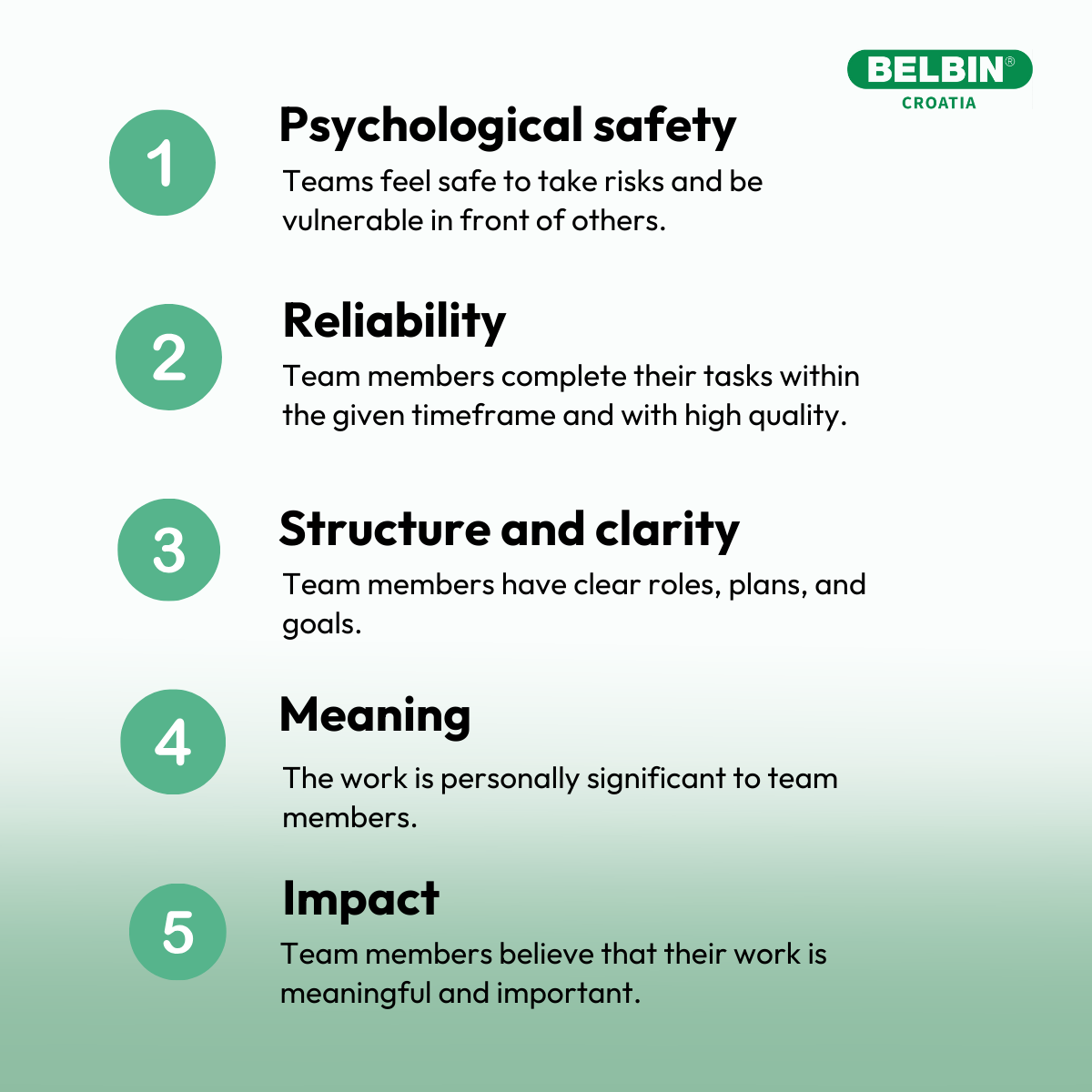Why are some teams highly efficient, while others are not? Google aimed to answer this question when 2012 it started a large-scale study searching for the secret to high team effectiveness. The results revealed one key factor that is often overlooked — psychological safety.
Project Aristotle: What ensures success?
As part of Project Aristotle, experts analyzed more than 180 teams within the Google organization, involving 250 employees. They conducted numerous interviews and surveys over two years, seeking to identify patterns and factors that influence team success.
The initial hypothesis was simple: if team members get along well, it should improve the work atmosphere and team performance. While friendships at work bring numerous benefits, researchers found that this alone wasn't enough for success. Team success did not solely depend on employee expertise, as even teams with top experts didn't always achieve the best results.
Experts then shifted their focus to how team members communicate, identifying four key factors that create a successful team, with the key to success lying in psychological safety. They discovered that among the 180 teams, those with a strong sense of psychological safety fostered an environment where members felt comfortable openly expressing their thoughts and ideas, leading to more productive discussions and innovative solutions.

What is team psychological safety?
Psychological safety is defined as the feeling of security within the team and the shared belief among team members that it's okay to take risks, express ideas, opinions, and uncertainties, ask questions, and admit mistakes — all without fear of negative consequences. The team is crucial in fostering psychological safety.
Psychological safety leads to engaged and motivated employees, reduced turnover, and better long-term results for the entire organization.
5 Steps to Achieve Psychological Safety
Creating a work environment where team members feel psychologically safe is a process that takes time. One helpful tool for building psychological safety is the Belbin methodology. Below are five tips on how to build psychological safety based on the globally recognized Belbin method for creating efficient teams.
Understanding and embracing different work styles
Each team member brings a unique set of skills, traits, and thought processes. To effectively collaborate, employees must learn how their colleagues communicate, learn, connect, and contribute to the team. Belbin individual reports are a great starting point, offering a summary of each team member's work style preferences and how they fit into the team. By recognizing and understanding the characteristics of the nine Belbin roles, team members can better understand each other and why certain members prefer specific tasks or approaches, for example:
Plant loves generating new ideas but may overlook practical details,
Shaper energizes and drives the team towards goals but may come across as tactless,
Teamworker focuses on team harmony but may avoid conflicts to maintain peace.
When a team recognizes the value of different approaches, it creates an atmosphere where varying perspectives are supported and complement each other. Diverse work styles and thinking become strengths, leading to better collaboration, innovation, and goal achievement.
Accepting (and encouraging) mistakes
Although phrases like "we're only human, we make mistakes" are heard more often in workplaces, many employees still feel upset when they make errors. In some cases, a blame culture develops, or mistakes are swept under the rug.
When employees accept different work styles, they also acknowledge their weaknesses. Through Belbin, it's possible to identify weaknesses that are the flip side of their strengths. This approach allows for feedback and open communication.
Encouraging open communication
Team members are encouraged to openly discuss their strengths, weaknesses, and how they can best contribute to the team. Instead of feeling pressured to "know everything," team members are free to admit challenges and seek ways to improve their skills, reducing stress and promoting continuous development and innovation.
For example, a Monitor Evaluator can openly express reservations about an idea without fear of being seen as overly critical. Other team members understand that the Monitor Evaluator's role requires analytical and thoughtful consideration. In this way, every member feels they can contribute without fear of negative reactions.
Promoting honest and constructive feedback
Leaders should adopt a "leading by example" approach, showing vulnerability and accepting feedback from their team. Feedback should be direct but assertive, considering the emotions of both parties. Thoughtful and immediate feedback works best. Since Belbin functions as a 360-degree tool, overly positive and overly negative responses are filtered out, and potential development areas are identified along with practical advice.
Distributing tasks and responsibilities according to roles
One of the common causes of insecurity in teams is the improper distribution of tasks and responsibilities. When team members are uncertain about what is expected of them, it can lead to feelings of insecurity. Additionally, if tasks are not assigned according to employees' preferences and abilities, motivation can decrease. Belbin helps distribute tasks and responsibilities based on each team member's natural tendencies and strengths, improving efficiency and job satisfaction.
For example, tasks that require precision and attention to detail can be entrusted to a Completer Finisher, while idea generation can be left to a Plant. A clear division of responsibilities reduces anxiety, as each team member feels confident in their tasks and knows they will be supported.
With World Mental Health Day approaching, this could be a great opportunity to recognize the benefits of building psychological safety based on the Belbin methodology. If you'd like to learn which team roles are present in your team and how to create psychological safety through a custom-made approach, feel free to reach out!



